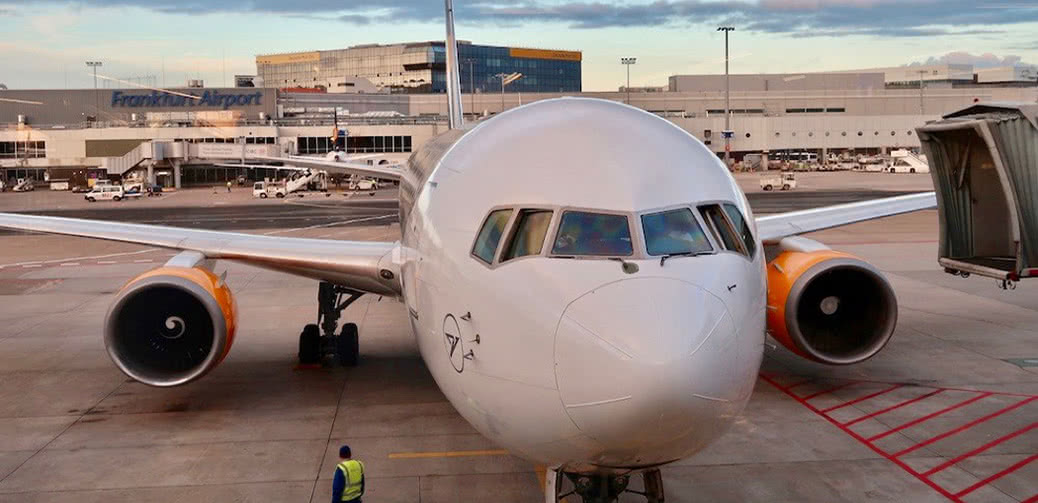Do you suffer from anxiety or a fear of flying? particularly over seemingly never-ending oceans? Here are 6 facts you need to know that will hopefully put your mind at rest on your next flight.
When you fly over water, you may worry that in the unlikely scenario that something goes wrong (engine failure, onboard fire), there is no nearby airport to land at. Even worse, once you approach the middle of your overwater flight, e.g., on a flight from LA to Hawaii, once you have flown for 2.5-3 hours, the plane is midway between your departure and arrival airport, so you are the maximum distance from safety. It’s too late to turn back.
Funnily enough, I note the same point on my parent’s around-the-world cruises. Once they leave San Fransisco, they are hugely far from land for many hours, and in case of an emergency, the coastguard is a long, long way away.
This fear is irrational, and by rationally considering the following facts, I hope you might be less uncomfortable on your next flight.
Can a plane takeoff on one engine?
Yes, it can. Before a certain speed – the so-called decision speed or V1 speed – the takeoff would be aborted, and the aircraft would be brought to a stop. If an engine fails after reaching V1 speed, the aircraft will continue its takeoff roll and get safely airborne on one engine before returning to the airport.
Can a plane fly on one engine?
If an engine fails mid-flight, the plane will not be able to maintain its altitude, but it will safely continue flying.
For example, in 2003, the captain of a United Airlines B777 flying from Auckland, New Zealand, to Los Angeles, USA, was forced to shut down one of the plane’s two engines because the oil pressure dropped dramatically. The Boeing continued to fly for more than 3 hours on one engine over the Pacific Ocean before landing in Kona, Hawaii.
Certain Plane Engines Require More Rigorous Tests
ETOPS stands for ‘Extended range Twin-engine Operational Performance Standard’ and applies to twin-engine aircraft on routes with a diversion time of more than one hour. It indicates the time that a commercial aircraft is allowed to fly away from the nearest suitable airport if one of its engines stops working.
ETOPS 240 means that the airplane can fly as far as up to 240 minutes (even on one engine) from the nearest suitable airport because it has been reliably proven to do so.
If you fly over a large body of water, your plane engines will have a high ETOPS ranking, which means that just one engine will be able to get your plane to a suitable airport.
Can a plane contain a fire
Yes, it can. The cargo holds are designed with fire extinguishers, as are the engines and the cabin. There are multiple fire extinguishers inside the aircraft that can be operated by the cabin crew or even the pilots.
Are pilots trained to ditch a plane on the water?
This highly unlikely scenario is not replicated in flight simulators.
Can a plane land on water in case of an emergency?
Yes, it can, but it is not designed to do so, and an emergency landing is always better on land at an airport. Of course, everyone knows the famous 2009 accident known as the Hudson Miracle, where Captain Chesley Sullenberg ditched his US Airways Airbus A320 in New York City’s Hudson River after both engines flamed out following a strike with a flock of Canada geese. The plane remained intact, and all 155 people aboard were rescued, but the river was calm at the moment of landing, so it would be a totally different scenario when landing at sea.
However, as long as sea conditions are smooth and the ditching is performed in a proper way, an aircraft can land on the sea and remain afloat. One successful example was on October 16, 1956, when a Pan Am flight 6 B377 Stratocruiser ditched en route from Honolulu, Hawaii, to San Francisco, about halfway the route, with all 31 aboard being rescued by a nearby Coast Guard Cutter.
The only sea landing in the recent modern jet time happened more than 20 years ago, in 1996, when an Ethiopian Airlines Boeing 767 was forced to ditch in the Indian Ocean, just off the shores of the Comoros islands, after it was hijacked and ran out of fuel. Unfortunately, it didn’t land smoothly as it slightly banked before touchdown, resulting in a break-up of the plane. Only 50 of the 163 passengers on board survived.
Remember
Remember, you are safer in a plane than in a car, so try not to let your fear interfere with your passion for travel. If all else fails, I suggest swigging a large glass of wine and trying to forget you are in the sky!
Copyright Luxury Travel Diary 2014 - 2025. Duplication outside of luxurytraveldiary.com is forbidden.
Note: Benefits & upgrades subject to availability. Benefits offered correct at the time of writing. Terms & conditions apply. Enquire for more information. Posts may be sponsored by the proprietor or brand being appraised. All opinions remain our own & are in no way influenced.















